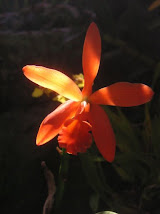 Mention Fiji as a holiday destination and most people think of white sand beaches and coconut palms. But there is another Fiji: the Nausori Highlands, the south-west section of the mountainous interior of Viti Levu. It surprises many people to learn that mountainous regions make up over 80% of the 10,400Km² area of Viti Levu; 2/3 of the island is classified as "steepland", having slopes greater than 18%.
Mention Fiji as a holiday destination and most people think of white sand beaches and coconut palms. But there is another Fiji: the Nausori Highlands, the south-west section of the mountainous interior of Viti Levu. It surprises many people to learn that mountainous regions make up over 80% of the 10,400Km² area of Viti Levu; 2/3 of the island is classified as "steepland", having slopes greater than 18%.The product of violent volcanic activity millions of years ago, the Nausori Highlands rise abruptly from the coastal plain reaching 900 metres above sea level. Not surprisingly the overwhelming majority of Viti Levu’s population lives on the narrow coastal plains, while the interior is sparsely inhabited.
The Nausori Highlands is accessible by just 3 roads, all unsealed and all ending at Bukuya, a village consisting of a mixture of corrugated iron and traditional thatched bures spilling down the mountainside, home to about 700 people.
A day trip through the Nausori Highlands takes the Nausori Highlands Road from Nadi to Bukuya, and then return to the coast via the Bukuya-Ba Road or the Bukuya-Sigatoka Road.
Nadi to Bukuya
The Nausori Highlands Road is off the Nadi Back Road and begins surrounded by sugar cane farms. The journey from Nadi to Bukuya is 45 km but can take up to 3-4 hours, depending on the road condition.
After 5 km you leave the sugar cane fields behind and enter the grassed foothills of the highlands. At 11 km the road begins to wind steeply upwards with short stretches of bitumen in the steepest parts to allow vehicles to grip the surface. At the top of the scarp you should stop to take in the magnificent views back towards the ocean and inland to the mountains! For the next 5 km you pass through forests and then lush tropical jungle. After 23 km the jungle gives way to grassland where slatted wooden bridges straddle rushing streams. It is common to see the occasional horse tethered by the side of the road but no sign of its owner.
Bukuya to Ba
The Bukuya to Ba road is 30 km long but the journey can take 2-3 hours. Of the 3 roads through the highlands this is the roughest. For much of the journey the road follows the ridge of the highest mountain range, so that you will not so much be travelling through the Nausori Highlands as above them. The road culminates at Navala, the most photographed village in Fiji because it is the only one which still consists solely of thatched bures.
Bukuya to Sigatoka
Bukuya to Sigatoka is 66 km. This area has plenty rivers and streams, so roads and bridges are more likely to be under water after wet weather. However, the last 20 km of the road is sealed and offers a picturesque journey through the Sigatoka River valley.
Accommodation: There are two options: The Bukuya Alpine Eco Centre offering traditional Fijian village stays & Heaven's Edge, a backpackers resort with panoramic views of the highlands.
Attention:
Roads in Fiji can be extremely rough with bare rock surfaces, loose stones, potholes, puddles and stretches of mud. There are no fuel or food services so, travelers should ensure they have adequate supplies of water and fuel. Take a picnic lunch as there are many beautiful riverside locations perfect for stopping. Roads and bridges can be washed away after storms. Before setting off always check that roads are navigable with the Fiji Visitors Bureau (tel. 672 2433) or local police posts.
Roads in Fiji can be extremely rough with bare rock surfaces, loose stones, potholes, puddles and stretches of mud. There are no fuel or food services so, travelers should ensure they have adequate supplies of water and fuel. Take a picnic lunch as there are many beautiful riverside locations perfect for stopping. Roads and bridges can be washed away after storms. Before setting off always check that roads are navigable with the Fiji Visitors Bureau (tel. 672 2433) or local police posts.






























No comments:
Post a Comment